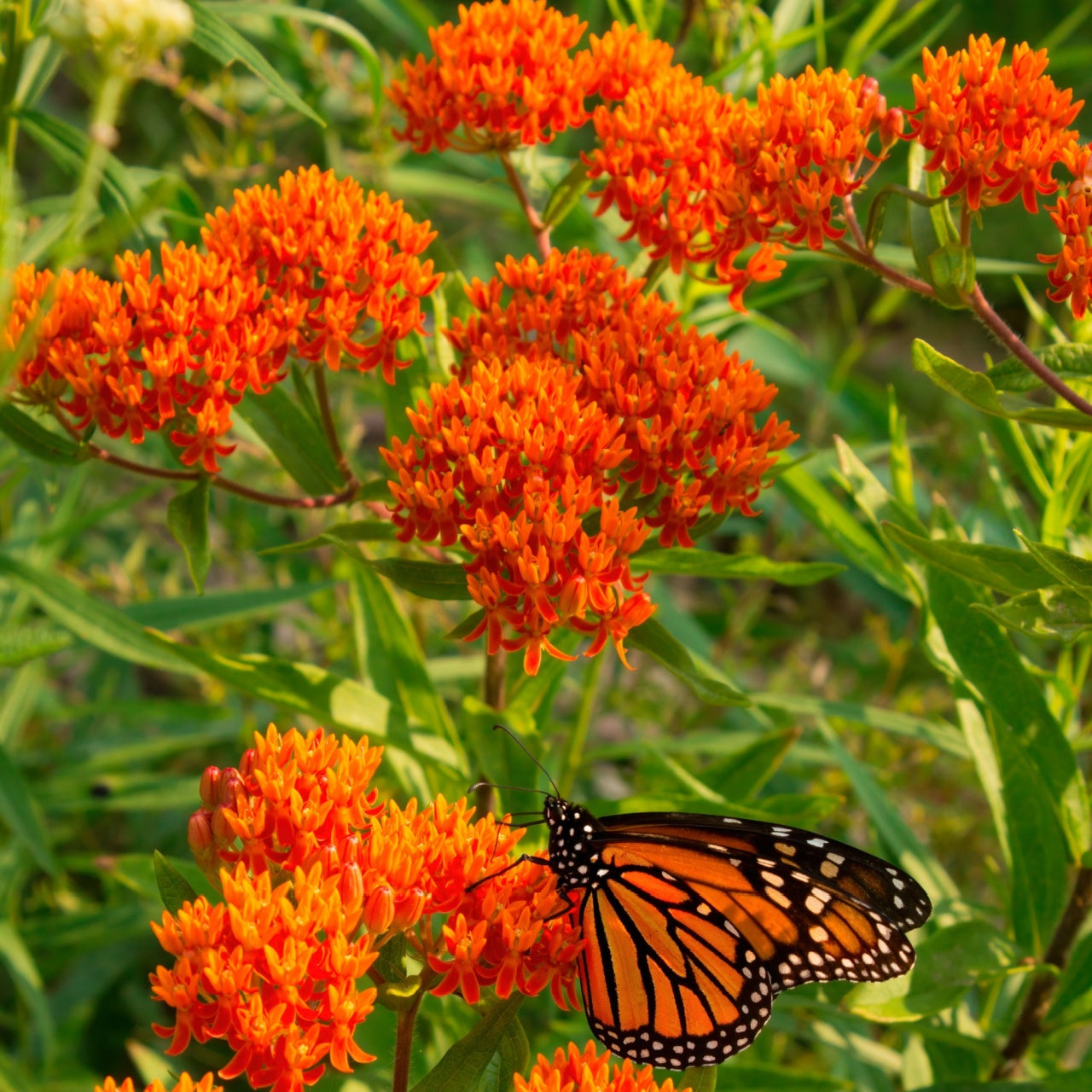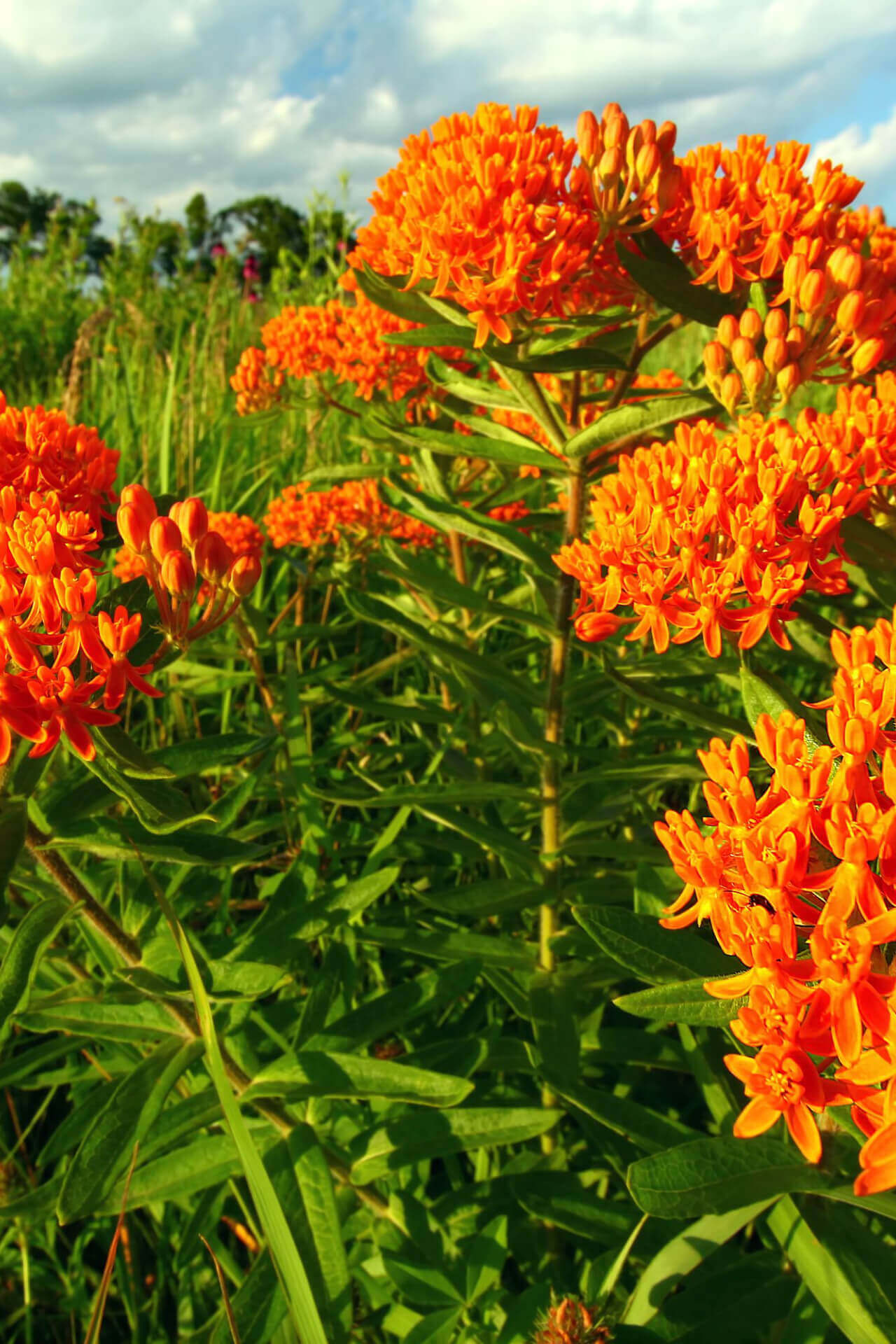Butterfly Weed For Sale
Butterfly Weed, also known as Asclepias Tuberosa, is a remarkable perennial plant that graces the eastern coast of the United States and down into the south. It is a lush, leafy plant with tiny orange blossoms that are highly attractive to butterflies. This plant comes from a family of plants referred to as “Milkweed” because of the unique, milky substance stored inside its stems, which is visible when broken. It is the host plant for the famed Monarch Butterfly and supports its full life cycle, from egg to caterpillar to butterfly and back again, making milkweed for monarchs an essential addition to any pollinator garden.
Butterfly Weed Plants Detail
Family: Apocynaceae
Light Requirement: Full Sun
Water Needs: Minimal
Height: 3-5 ft
Spread: 2 ft
Growth Rate: Rapid
Soil Preference: Well-drained, Rocky, Sandy
Bloom Time: June - August
Flower Color: Orange
Wildlife Value: Monarchs and other butterflies, caterpillars
Notable Characteristics of Asclepias Tuberosa
Butterfly Milkweed is a lush, leafy plant with many oblong, unlobed leaves. The stem is sturdy and covered in fine hairs. When broken, it gives off a sticky, white substance, similar to Dandelions. The foliage of this plant is a lighter, bright green, which contrasts strikingly with its tiny orange flowers.
The blooms are flat-topped and contain multiple sprigs of flowers clustered tightly together. The flowers themselves have ten pointed petals in two layers and a yellow center. They are delicate, eye-catching flowers among the springy green foliage and are a gorgeous addition to any garden.
Landscape and Maintenance of Butterfly Milkweed
A native of the eastern and southern United States, the orange flower thrives in open meadows, grasslands, prairies, and roadsides. It is highly tolerant of drought conditions and infertile soil, making Butterfly Milkweed a hardy plant. It does not spread aggressively, but it isn't easy to move once established, making it a perfect plant neighbor and garden addition.

Exposure
Butterfly Milkweed thrives in full sun, requiring at least 6 hours of direct sunlight daily. It prefers well-drained soil and benefits from the bright, warm conditions to produce vibrant flowers and attract pollinators.
Height at Maturity
Over 12"
Usage
Pollinator Plant
Shipped As
Bare-root
Ships
USPS
Planting Zones
3-9





